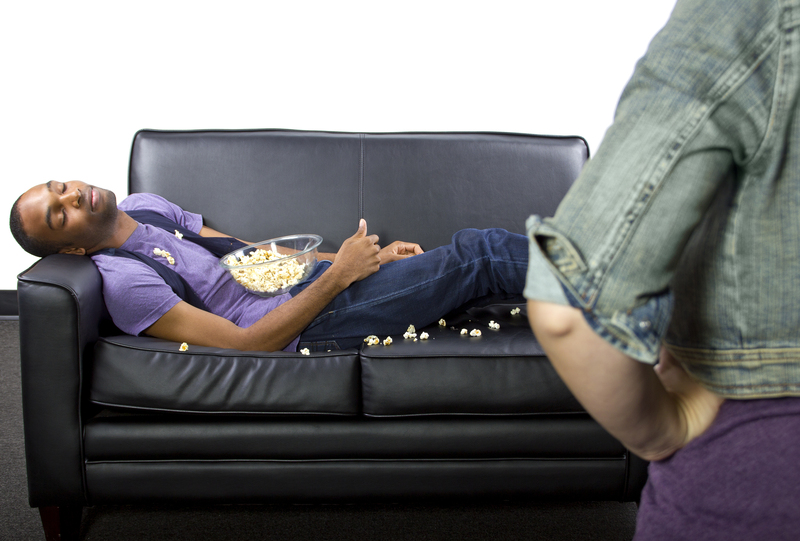How to Downsize Your Belongings Before Moving: The Complete Guide
Moving to a new home can be both exciting and stressful. One of the most challenging steps is figuring out what to keep, what to toss, and how to streamline your possessions efficiently. Knowing how to downsize your belongings before moving not only saves you time and money but also helps you start fresh in your new space.
In this comprehensive guide, you'll learn the best strategies to downsize before moving, practical tips to make the process smoother, and actionable steps to ensure your move is lighter and less overwhelming.
Why Downsizing Your Possessions is Important Before Moving
Downsizing before a move offers a range of benefits that go beyond just saving on moving costs:
- Reduced Moving Costs: Moving fewer items means lower transportation and labor expenses.
- Less Stress: Fewer belongings equal less packing, organizing, and unpacking.
- A Fresh Start: Shedding unnecessary items gives you a cleaner slate in your new home.
- Clutter-Free Living: Downsizing encourages a more organized, minimal lifestyle.
- Environmentally Friendly: Selling, donating, or recycling reduces landfill waste.

How to Prepare to Downsize Your Home Before Moving
Preparation is key when it comes to reducing your possessions before relocating. Here's how to set yourself up for success:
1. Set Clear Downsizing Goals
- Decide the amount of space you're moving into and what will realistically fit.
- Establish a timeline: How long do you have before moving day?
- Identify priorities: Are there essential or sentimental items you cannot part with?
2. Make a Plan and Schedule
- Create a checklist of rooms or categories (e.g. furniture, clothing, books).
- Dedicate time slots: Block out time in your calendar just for downsizing tasks.
- Set mini milestones: Break the downsizing process into manageable segments.
Practical Steps to Downsize Your Belongings Before Moving
Let's dive into actionable steps that help make the process efficient, manageable, and even enjoyable.
1. Start Early and Take it One Space at a Time
Begin as soon as you know you're moving. Tackle one room or space per day or week, depending on your schedule. Focusing on one area prevents overwhelm and allows thorough sorting.
2. Sort Into Four Categories: Keep, Donate, Sell, and Discard
As you go through your belongings, place each item into one of four categories:
- Keep: Items you absolutely need or love and will use in your new home.
- Donate: Items in good condition that you no longer use, but someone else could benefit from.
- Sell: Valuable items you don't want, but are in sellable condition.
- Discard: Anything broken, damaged, or unusable.
Tip: Use boxes or bins labeled for each category to stay organized.
3. Use the 'One-Year Rule'
If you haven't used or worn something in over a year, it's a strong sign it's time to let go. This rule is especially helpful with clothing, kitchenware, and electronics.
4. Take Inventory of What You Own
Write down or use an app to log your items. Taking inventory helps you visualize how much you need to downsize and avoid duplicates.
5. Downsize Large Furniture and Appliances
- Measure the space in your new home. Only take large items that fit the new layout.
- Consider multi-functional pieces, such as sofa beds or expandable tables.
- Sell or giveaway bulky items you no longer need.
6. Be Ruthless with Sentimental Items
Everyone has belongings with emotional significance. To avoid becoming overwhelmed:
- Limit keepsakes to a small box per family member.
- Digitize photos, letters, or mementos for easier storage.
- Gift heirlooms to family members if you lack space.
7. Use Up What You Have
Don't move half-empty containers or perishables. Use up cleaning supplies, pantry items, or toiletries in the weeks leading up to your move.
Where and How to Get Rid of Unwanted Stuff
Once you know what you're not keeping, use these strategies to responsibly rehome your unwanted items:
1. Donation
- Local charities, thrift shops, and shelters accept clothing, furniture, and housewares.
- Nonprofits such as Habitat for Humanity ReStores take building materials, appliances, and tools.
- Book or toy drives are great venues for family downsizing.
2. Selling Your Belongings
- Host a garage or yard sale for quick cash and to meet your neighbors before the move.
- List valuable items online on sites like eBay, Craigslist, Facebook Marketplace, or local classifieds.
- Consider consignment stores for higher-value pieces.
Tip: Start listing items early -- selling may take longer than expected.
3. Recycling and Disposing Responsibly
- Recycle electronics, batteries, or hazardous materials at specialized centers.
- Contact your city for bulk trash pickup or disposal services.
Properly disposing of what you don't need helps the environment and keeps your move eco-friendly.
Packing After Downsizing: Packing Smarter, Not Harder
With fewer things to move, packing becomes simpler. Here's how to streamline further:
- Pack by category (clothes, books, kitchen, etc.) for easier unpacking.
- Label each box with contents and destination room.
- Use suitcases and bins you already own to save on moving supplies.
- Keep an essentials box with things you'll need immediately at your new home.
Top Room-by-Room Downsizing Tips
1. Kitchen
- Keep only essential cookware, utensils, and appliances.
- Discard duplicate gadgets, chipped dishes, or expired pantry goods.
- Donate non-perishables to food banks.
2. Bedroom & Wardrobe
- Apply the one-year rule to clothes and shoes.
- Store out-of-season items in vacuum bags or donate.
- Downsize bedding to what fits your new beds (twin, queen, king, etc.).
3. Living Room
- Choose furniture that serves multiple purposes.
- Edit your book and DVD collections.
- Keep only meaningful decor or artwork.
4. Bathroom
- Safely dispose of expired medications and cosmetics.
- Keep only daily-use towels, toiletries, and cleaning products.
5. Garage or Storage Areas
- Sort through tools, outdoor equipment, and holiday decor.
- Keep practical, regularly-used items and donate or sell the rest.
Helpful Downsizing Tips for Families and Seniors
For Families:
- Involve kids in the process, making it a fun game or challenge.
- Encourage each family member to choose what to keep with a "favorite things" approach.
- Schedule donation drop-offs together so kids see the good in giving away unused toys or clothes.
For Seniors:
- Start early and take your time to avoid feeling rushed.
- Ask family members for help with sorting and decision-making.
- Digitize important documents, photographs, or letters to reduce physical clutter.
Common Downsizing Mistakes to Avoid
- Procrastination: Waiting until the last minute adds stress and may lead to rash decisions.
- Moving everything anyway: Paying to move items you'll never use is a waste of time and money.
- Letting sentiment rule: Clinging to too many keepsakes makes downsizing ineffective.
- Failing to measure new spaces: Items that won't fit will just become a new form of clutter.
FAQs About How to Downsize Your Belongings Before a Move
When should you start downsizing before moving?
Start as early as possible. Ideally, one to three months before your move gives you plenty of time to make thoughtful decisions and avoid last-minute stress.
What should I absolutely not move?
Avoid moving duplicate items, broken valuables, outgrown clothing, expired food and toiletries, or items with no practical or sentimental value.
How do I decide what to get rid of before moving?
Ask yourself whether you use, love, or have space for it in your new home. If not, it's a good candidate to sell, donate, or discard.
What if I have emotional attachment to many things?
It's common to struggle with parting with belongings. Set limits, digitize memories, or ask family to help you make objective decisions.

Conclusion: Enjoy a Lighter Move and a Fresh Start
Downsizing your belongings before moving can feel daunting, but it doesn't have to be. By starting early, using a structured approach, and focusing on what truly adds value to your life, you ensure your move is smoother and your new home stays clutter-free. Remember: every item you let go of makes space for new experiences and memories. Good luck, and enjoy your relocation journey!



